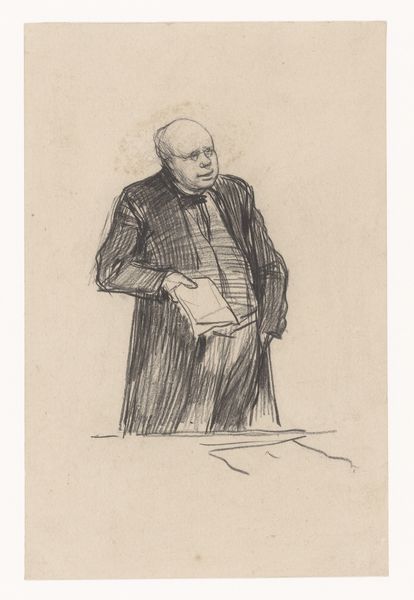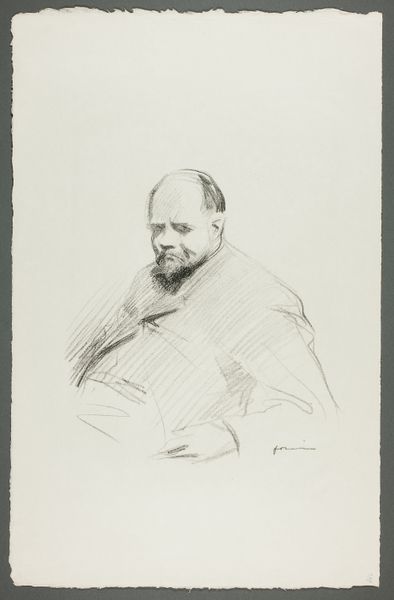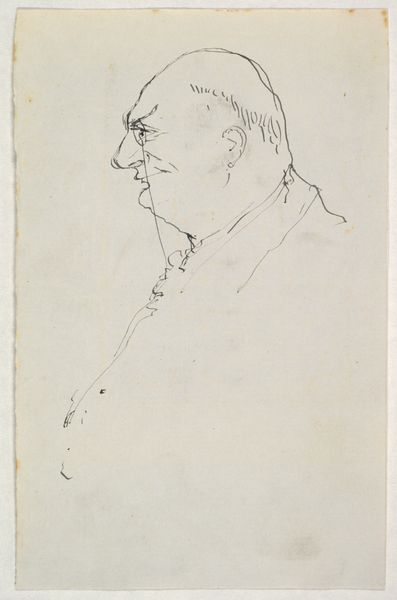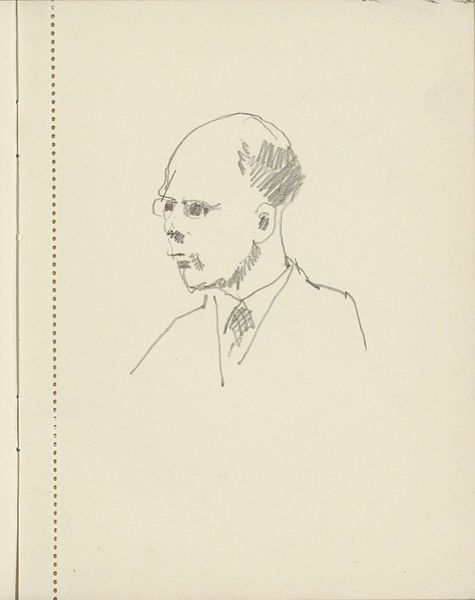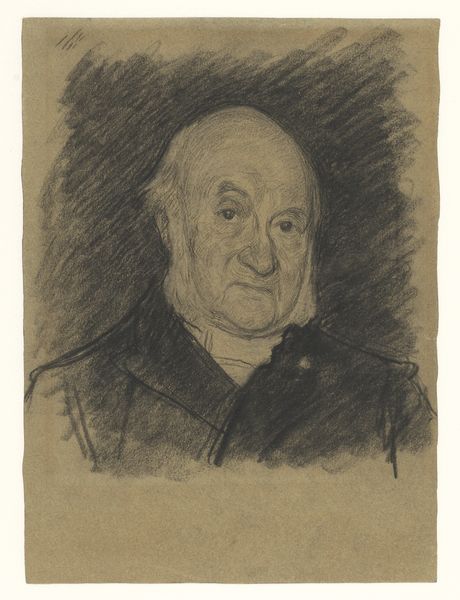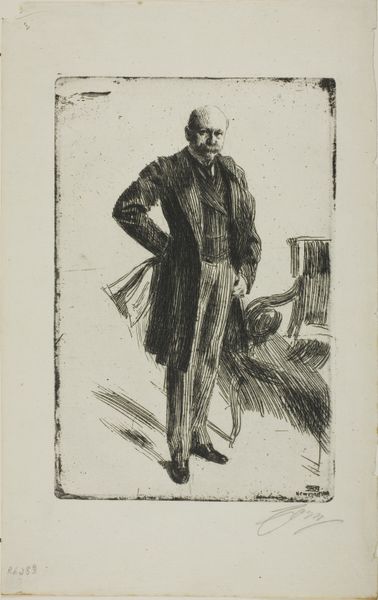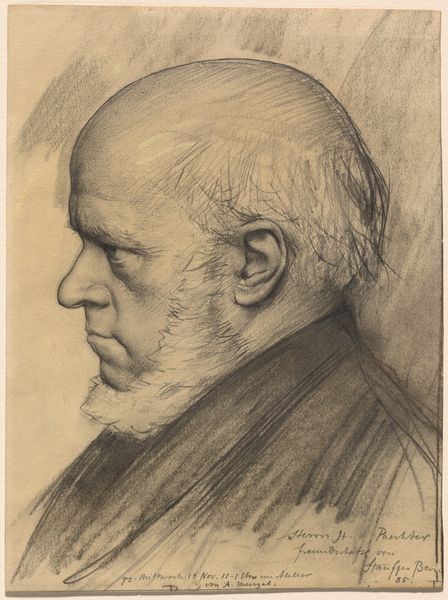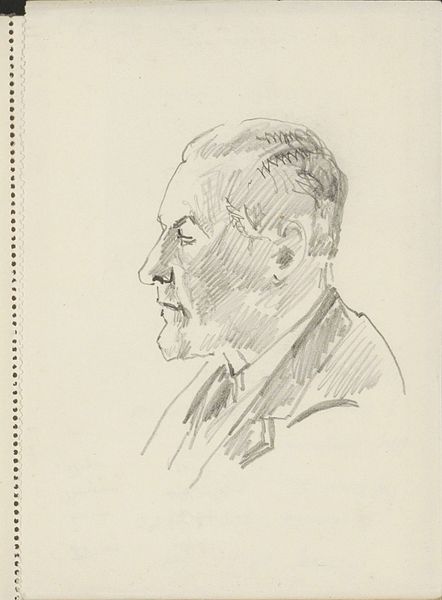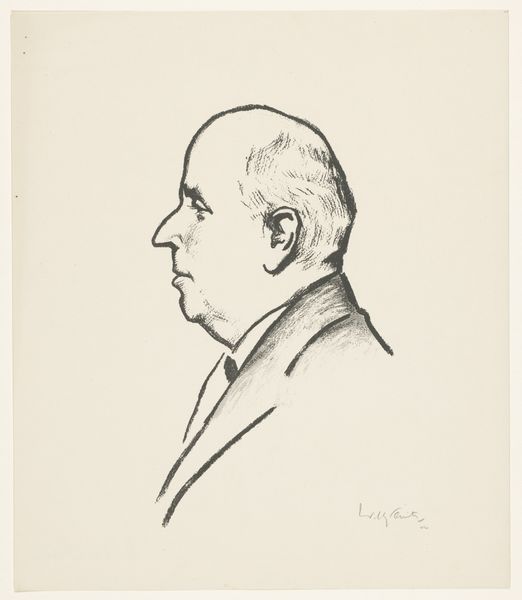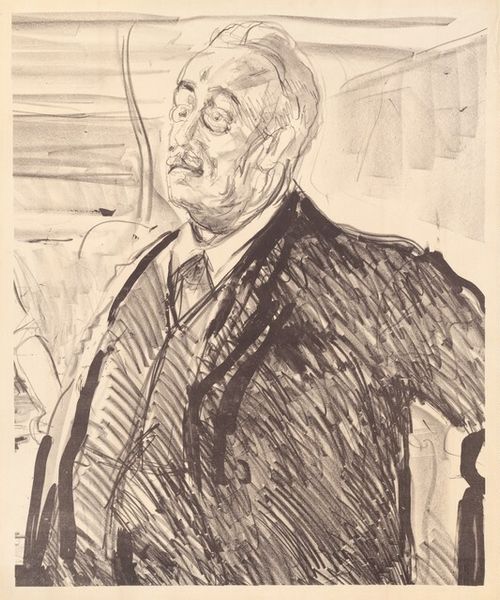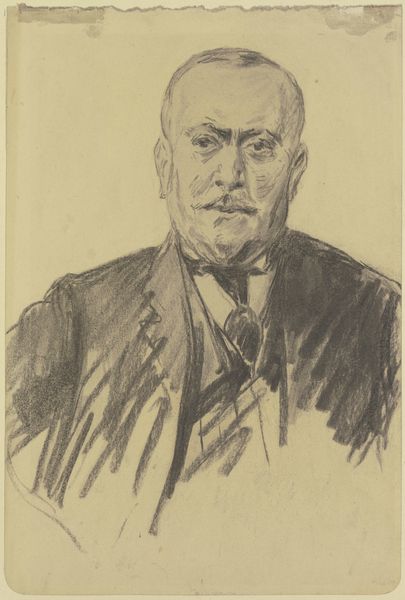
drawing, pencil
#
portrait
#
drawing
#
light pencil work
#
figuration
#
pencil
#
sketchbook drawing
#
realism
Dimensions: height 180 mm, width 106 mm
Copyright: Rijks Museum: Open Domain
Curator: Standing before us is Pieter de Josselin de Jong's "Two Studies of Dr. Schaepman," a pencil drawing from 1887, now housed in the Rijksmuseum. Editor: My immediate reaction is a somber, almost melancholic mood. The muted tones and the unfinished quality evoke a sense of introspection, don't you think? Curator: Indeed. De Jong's technique here is quite economical. Look at how he uses the pencil strokes to define the figure's form and create a sense of volume, almost as if he is mapping the sitter, Dr. Schaepman. Editor: Yes, and let's remember Dr. Schaepman. He was a prominent Catholic priest and politician at a time of social upheaval in the Netherlands. Understanding this provides a window into interpreting the portrait. Does the sketch capture Schaepman as an intellectual and activist navigating tumultuous political terrain? Curator: Perhaps. Or it could speak more about de Jong’s own process. Consider the materials – paper and pencil. These are readily available, democratic tools. What does it mean when someone from his social background employs those tools, as opposed to something considered high art? Is this choice meaningful to understanding social hierarchies? Editor: That is astute. His choice definitely begs examination within its period's socioeconomic framework. Perhaps De Jong wants to humanize Dr. Schaepman in a very palpable way, not as some unreachable personage but one closer to the people and community. Curator: Another thing that strikes me is the composition. The presence of the secondary study feels somewhat incomplete, revealing layers of decision-making and revisions. Editor: Right, and this also ties into the political reality. Schaepman was a figure of transition—trying to modernize the Catholic presence in the Netherlands. The ambiguity and sense of evolution communicated by this 'sketchbook drawing' encapsulates that flux beautifully. Curator: Ultimately, what interests me are these accessible materials which invite the viewer to investigate the methods behind art production and reception and question existing notions of what deserves value and appreciation. Editor: And for me, the drawing acts as a potent reminder to place the human experience squarely at the heart of our historical investigation of art. Curator: Agreed. I think it underscores the artist's hand and decision making so directly that any viewer would find a point of access. Editor: Absolutely, offering a point of departure into complex political and social thought through deceptively simple means.
Comments
No comments
Be the first to comment and join the conversation on the ultimate creative platform.
